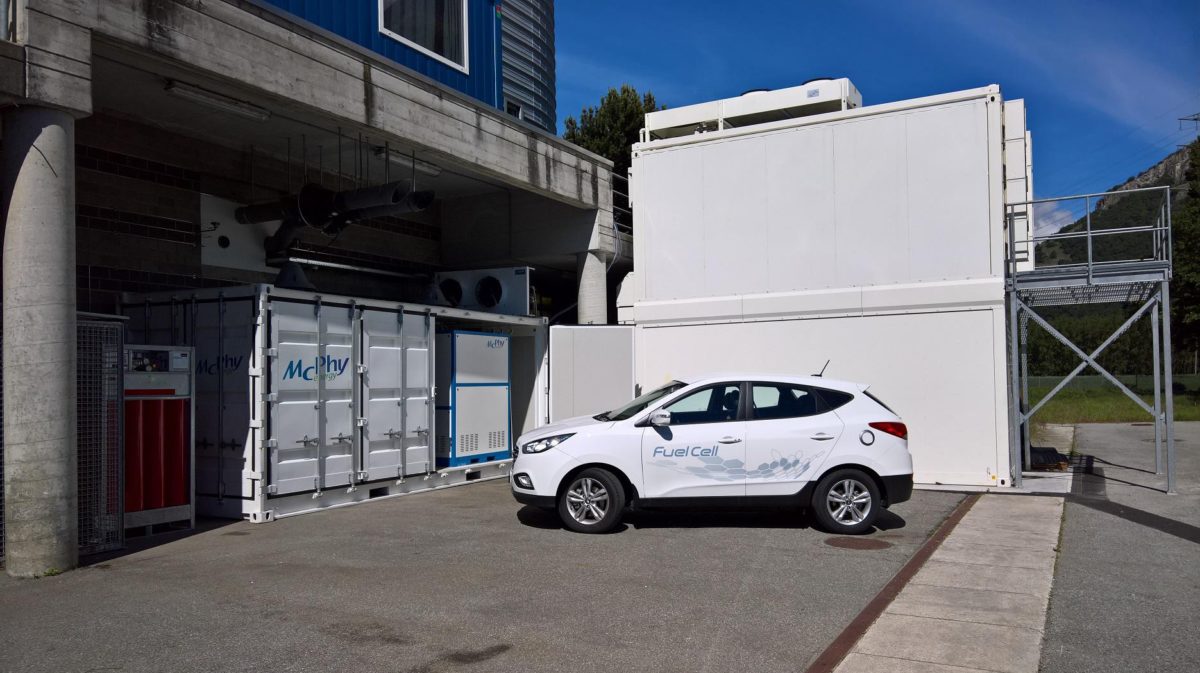Scientists at the Laboratory of Physical and Analytical Electrochemistry (LEPA) of the Swiss Federal Institute of Technology Lausanne (EPFL) have developed a vanadium-manganese dual-flow battery that can be used for both power storage and hydrogen generation.
The LEPA system combines a conventional redox flow battery (RFB) with two catalytic reactors that are able to produce green hydrogen by utilizing the fluid that runs through the battery. Unlike conventional redox flow batteries, the dual-flow battery, once it is fully charged, can discharge its fluid into the catalytic reactors, thus creating more storage space. “The dual-circuit RFB has the advantage of offering two discharging modes, and to store energy beyond the energy capacity of the electrolytes in the form of renewable hydrogen energy storage,” the Swiss group stated.
“This system is distinct from the conventional RFB in that the former includes a secondary energy platform in which electrochemical energy can be converted into renewable hydrogen by water-splitting using redox electrocatalysis,” the researchers explained. This new kind of hydrogen production from water relies on the use of a redox mediator on solid electrocatalyst particles in a reactor and offers several advantages over conventional electrolysis in terms of safety, membrane degradation, purity and flexibility.
Redox mediators, which are chemicals with an electrochemical activity that are able to exchange electrons with fuels or oxidants, are a crucial component for the device's hydrogen evolution reaction (HER) – which is the cathodic reaction in electrochemical water splitting – and have to be chosen carefully, as they have to ensure the reversibility, solubility, and stability of its performance.
Popular content
According to the scientists, the battery exhibited great stability over 50 cycles, with an average energy efficiency of 68% at a current density of 50 mA ⋅ cm-2 and a water-splitting voltage efficiency of 64.1%. “The hydrogen produced by the LEPA system is pure and only needs to be dried and compressed for optimal storage,” they went on to say. “That system is also safer than conventional ones because it generates the oxygen and hydrogen separately, rather than simultaneously, so there is less risk of an explosion.”
The research team believes the system is particularly interesting for transportation applications.
All the details on the battery can be found in the paper Combined hydrogen production and electricity storage using a vanadium-manganese redox dual-flow battery, published in Cell Reports Physical Science.
This content is protected by copyright and may not be reused. If you want to cooperate with us and would like to reuse some of our content, please contact: editors@pv-magazine.com.



Excellent work by the EPFL team supported by Cellcube and Bushveld Minerals.
Hi Paul, are you able to explain the extent of CellCube’s and BMN’s support and involvement in this project please?